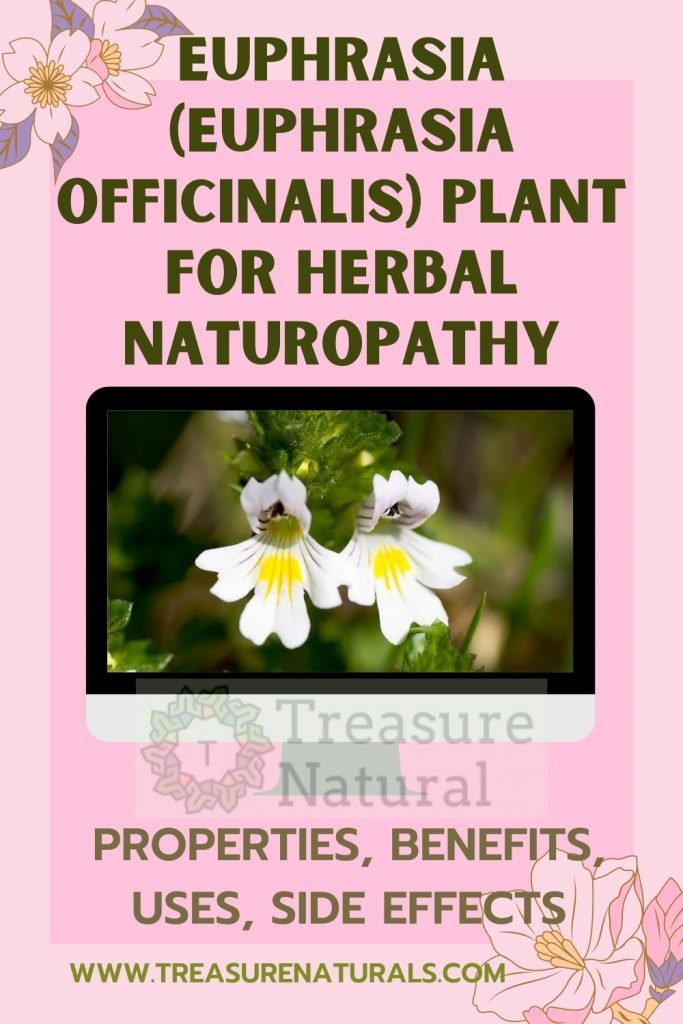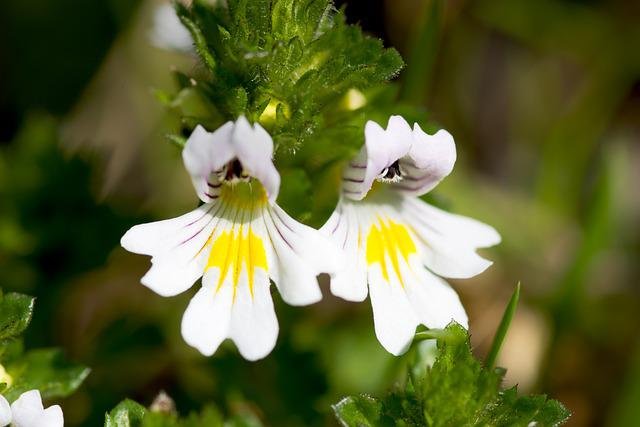
Euphrasia (Euphrasia officinalis) is a plant of the Scrofulariaceae family. Known for its anti- inflammatory and decongestant properties, it is useful for eyes, coughs and colds. Let’s find out better.
Properties of Euphrasia
The aerial parts of euphrasia contain lignans, glycosides, acid-phenols and an essential oil, which give the plant an anti- inflammatory and antibacterial action, supported in particular by the presence of iridoids, flavonoids and tannins (euphrasiotannic acid).
Euphrasia is used in herbal medicine and homeopathy as a decongestant of the ocular area, useful for soothing the eyelids, relieving the symptoms of conjunctivitis, both of infectious origin and caused by allergy and to calm eye irritation, due to too much exposure to the sun or lamps, wind and irritating atmospheric agents. For this reason it can be advantageously used in mouthwash or lotions aimed at relieving congested or ulcerated mucous membranes (canker sores, sore throat, etc.) and the skin.
Recent studies have proven its anti-inflammatory efficacy, in the treatment of phlegm in case of cough, cold, allergic rhinitis and sinusitis, by means of fumigations.
Properties of Euphrasia
The aerial parts of euphrasia contain lignans, glycosides, acid-phenols and an essential oil, which give the plant an anti- inflammatory and antibacterial action, supported in particular by the presence of iridoids, flavonoids and tannins (euphrasiotannic acid).
Euphrasia is used in herbal medicine and homeopathy as a decongestant of the ocular area, useful for soothing the eyelids, relieving the symptoms of conjunctivitis, both of infectious origin and caused by allergy and to calm eye irritation, due to too much exposure to the sun or lamps, wind and irritating atmospheric agents. For this reason it can be advantageously used in mouthwash or lotions aimed at relieving congested or ulcerated mucous membranes (canker sores, sore throat, etc.) and the skin.
Recent studies have proven its anti-inflammatory efficacy, in the treatment of phlegm in case of cough, cold, allergic rhinitis and sinusitis, by means of fumigations.
How to use
EXTERNAL USE
INFUSED: 1 level spoonful of aerial parts of eyebright, 1 cup of water. Cover and leave to infuse for 15 minutes, then filter. Once filtered, pour it into a glass, where you will dip some pieces of sterile gauze; then place them on your eyes. It would be better to get a few drops into the eyes: this preparation will take the place of a decongestant, disinfectant, and analgesic eye drops.
Lotion: with the same infusion you can make mouthwashes for gargling, to relieve inflammation of the throat and mouth; and lotions to treat skin irritations.
Contraindications of Euphrasia
There are no particular contraindications or side effects of euphrasia except in case of allergy to one or more of the components.
Description of the plant
Annual herbaceous plant with straight, cylindrical, slender branchy stem, 25-35 cm high. The leaves are opposite, denticulated, ovate and small. The whitish flowers have purple streaks. The seeds are grayish and wrinkled.
The habitat of euphrasia
Native to Europe, northern Asia and North America, preferring cold and temperate climates of extra-tropical regions. 18 species are present in the Italian spontaneous flora.
Background

The botanical name of Euphrasia derives from the composition of the Greek words eu, “good“, and phren, ” soul“; perhaps in allusion to his elegant bearing. In fact, the plant is not mentioned by the ancients for therapeutic purposes. It was first reported by Hildegard of Bingen, who advised it in wounds and not for eye care.
The use in ocular affections would be based on the Theory of Signatures developed and deepened by Paracelsus, by virtue of the fact that the flower bears an eye-shaped design on the petals.
Subsequently, the plant became appreciated above all for its ability to soothe eye irritations and for its gentle ophthalmic astringent action. With a distinctly bitter taste, it was also used for its property of stimulating the appetite and digestive processes.






